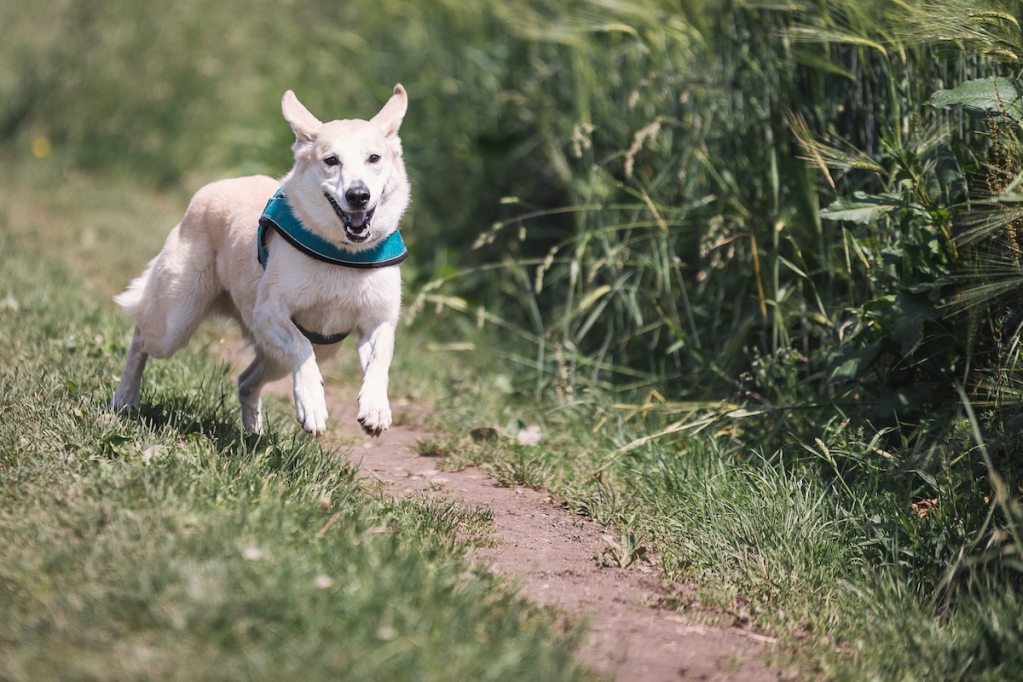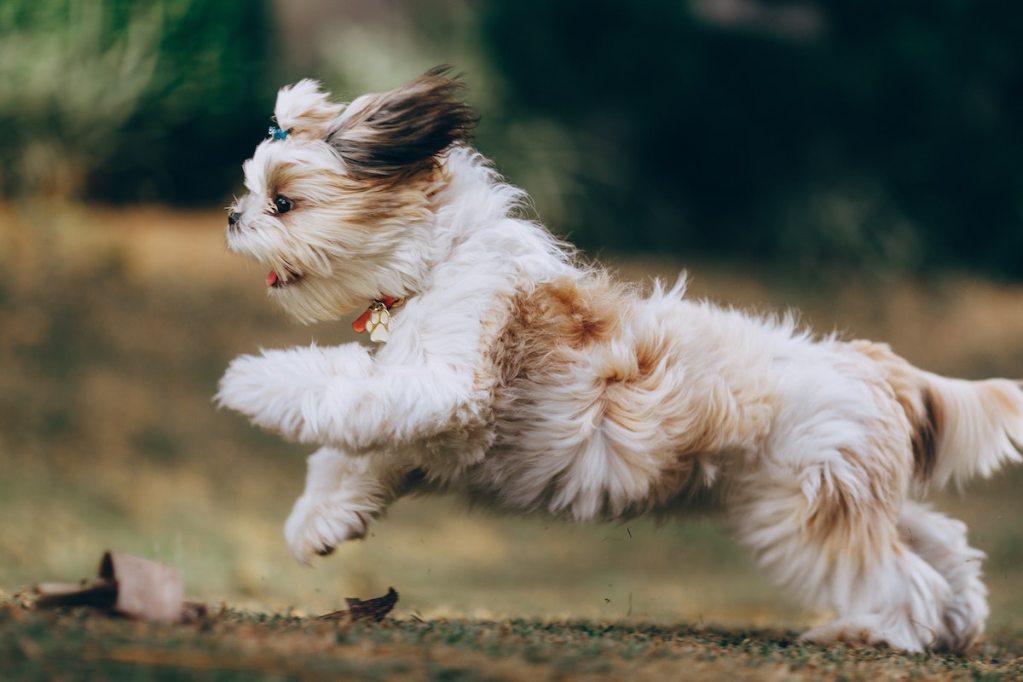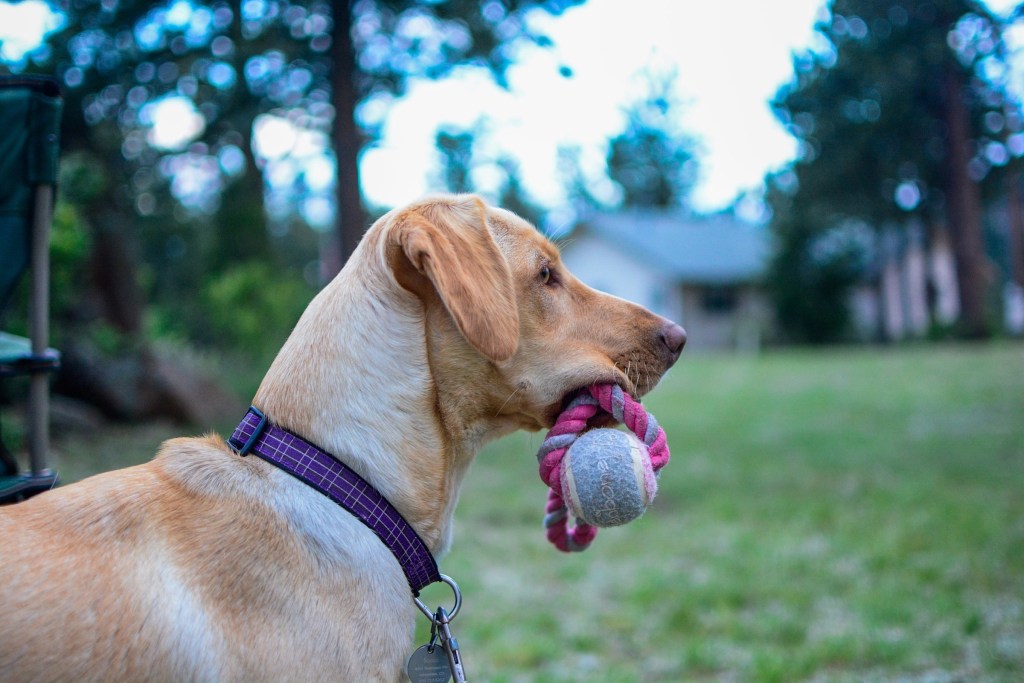
You’re just chilling in your home or backyard with your dog. Suddenly, they book it and start running around in circles. You would think they were trying out for the Kentucky Derby — that’s how fast they’re attempting to move — except they’re not a horse. The problem? You can’t figure out what’s going on or why they’re displaying this behavior. It can feel jolting and alarming for a first-time pet parent or one whose previous dogs never acted this way.
Your dog may have a case of the zoomies. The word sounds silly. However, it’s a real-deal dog behavior. Why do the dog zoomies happen? Should you be concerned? Here’s what to know about this often-seen, little-talked-about doggie phenomenon.
What are the zoomies, and what causes them?
Zoomies is a term used to describe a natural dog behavior that occurs when dogs get a sudden burst of energy. To get that energy out, the dogs dash around in circles (or figure eights) as if they’re doing laps around a racetrack. It’s like the Tasmanian Devil mixed with Allyson Felix.
Dog zoomies are typically a short-lived behavior, lasting a couple of minutes max, and tend to be more common in puppies. Adult and senior dogs can get a case of the zoomies, too, though.
You might notice your dog usually gets the zoomies at the same time. This tendency is normal. Dogs may frequently get zoomies when you get home from work — they’re so excited to see you and have been loafing around all day. Your dog may also display this behavior before or after a meal or treat for similar reasons (excitement).
Other times, the pent-up energy is the nervous kind, so you may notice your bath-hesitant dog get the zoomies following a cleaning session.

Are zoomies a cause for concern?
Dog zoomies can feel abrupt and concerning. The good news is that zoomies are generally not a reason for any worry. They’re simply normal, harmless behavior. However, if your dog is doing zoomies daily — particularly past puppyhood — it could be a sign of a behavioral issue or an unmet need for physical or mental stimulation.
As always, your veterinarian is your best resource for your dog’s healthcare. They can help you determine if the zoomies are the sign of something else and plot out strategies to stop the behavior.

How can I stop the zoomies?
In a healthy, normally happy dog, you can simply let the zoomies take their course. They shouldn’t last more than a minute or two – if that — and are usually not the sign of any underlying medical or behavioral issue. Trying to step in and stop the zoomies may actually prolong the event or turn it into a game, with your dog pivoting as they think you’re chasing them.
That said, if you’re concerned or think it’s a sign of an unmet need, speak with your dog’s vet to rule out any underlying medical issues. Zoomies are the result of pent-up energy. If your dog constantly gets them, you may be able to pinpoint why. A few solutions may include the following.
Enlist in dog care assistance
For example, if they’re home for long hours every day, you may want to look into a dog walker or doggie daycare. These services will help your dog get the physical and mental stimulation they need throughout the day, so they won’t have so much unused energy when you arrive home. You can both cuddle after a long day.
Add playtime sessions
If you’re home often or can take your dog places, such as to work, make a point to engage them more frequently during the day. Just 5 minutes of tossing the ball every hour or two, combined with two to three walks per day, can tire a pup out in a good way.
Give plenty of treats and praise
Sometimes, the energy is nervous, such as from a bath. Real talk: Some dogs simply don’t like baths and never will. However, you may be able to make the experience more enjoyable. Treat them and offer plenty of praise to help your dog associate bath time with positive vibes. These tactics may also help with other grooming needs, such as nail clippings, brushing teeth, haircuts, and combing fur.
Reevaluate training tactics
Training sessions can also cause anxiety in some dogs, particularly if they aren’t taking to it quickly. You may hire a professional trainer specializing in dogs with lots of energy or anxiety. Or, perhaps the fix is more straightforward: Are you using long commands instead of short-and-sweet ones? Scolding your dog instead of using positive reinforcement like treats? Changing your approach may change your dog’s reaction.
Bottom line? The zoomies are generally not a cause for alarm. They’re a normal dog behavior. It can be puzzling to watch your dog dash around in circles like a track star (bonus points for adding flips), but it’s normal canine behavior. There’s usually no need to try to stop the zoomies. Simply let them run their course. The zoomies are more common in puppies. Though older dogs can get the zoomies, the event normally isn’t an everyday affair. If it is, it may be a sign your dog needs new ways to engage in physically and mentally stimulating activities throughout the day. Play sessions, walks, doggie daycare, agility courses, and food puzzles are all great ways to engage your dog. Speak with a vet if you’re concerned about physical or mental health issues.
Editors' Recommendations
- 5 surefire ways to keep your dog off your bed and get a good night’s sleep
- Taking your dog’s collar off at night: Safe move or safety risk?
- Looking for signs your dog has ticks? These telltale symptoms mean you have a flea or tick problem
- 7 dog training podcasts we’re obsessed with
- Funny dog video: Pup has an adorable reaction to a superhero pet on TV




